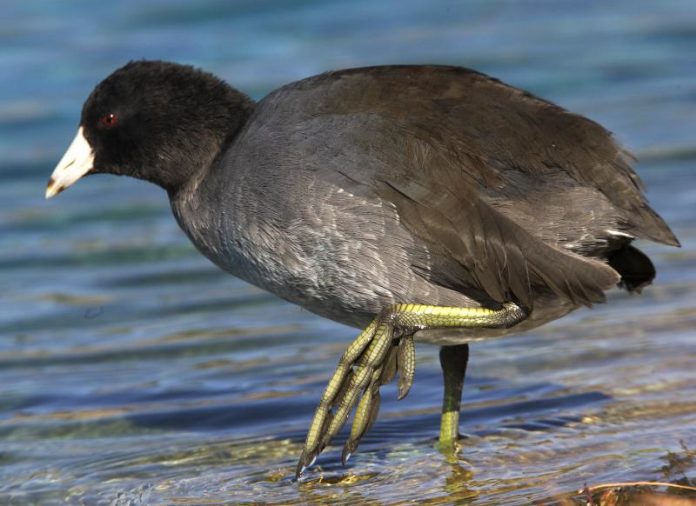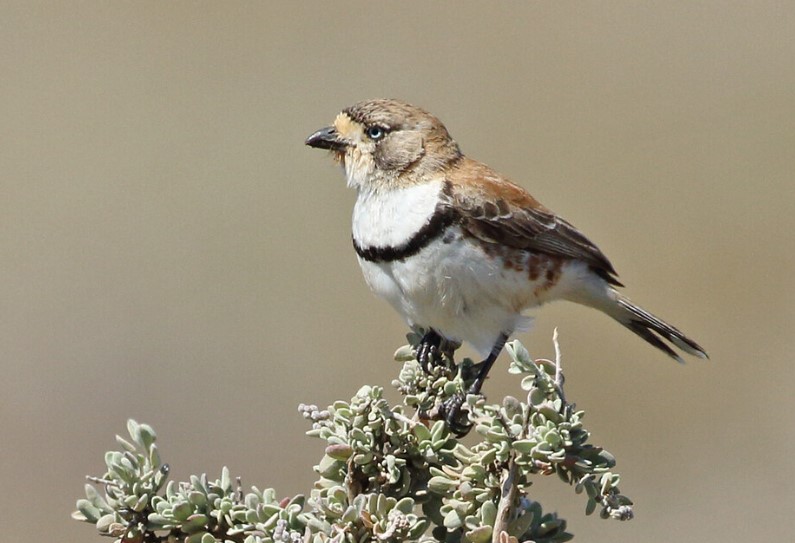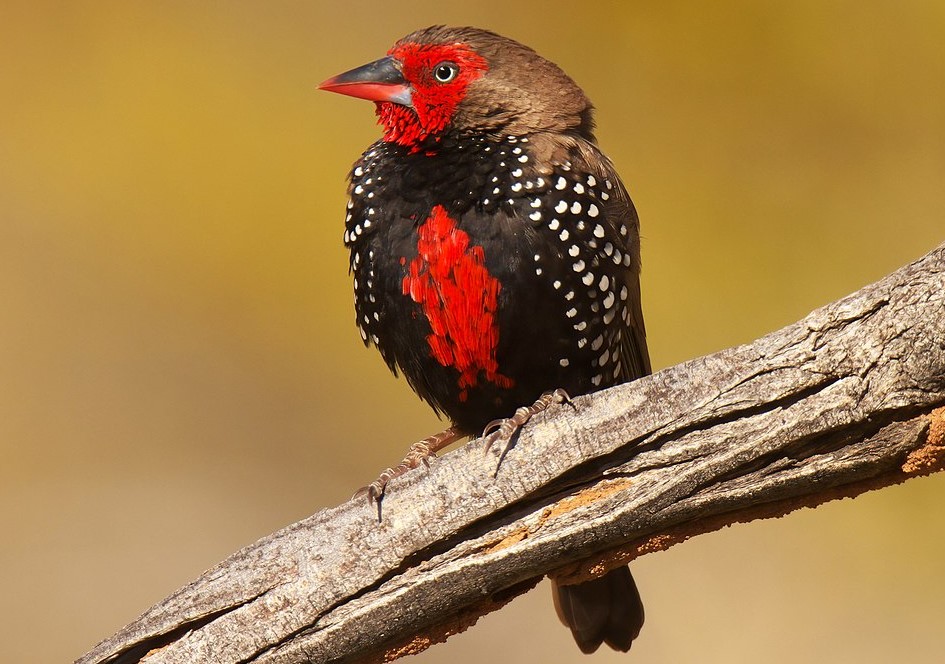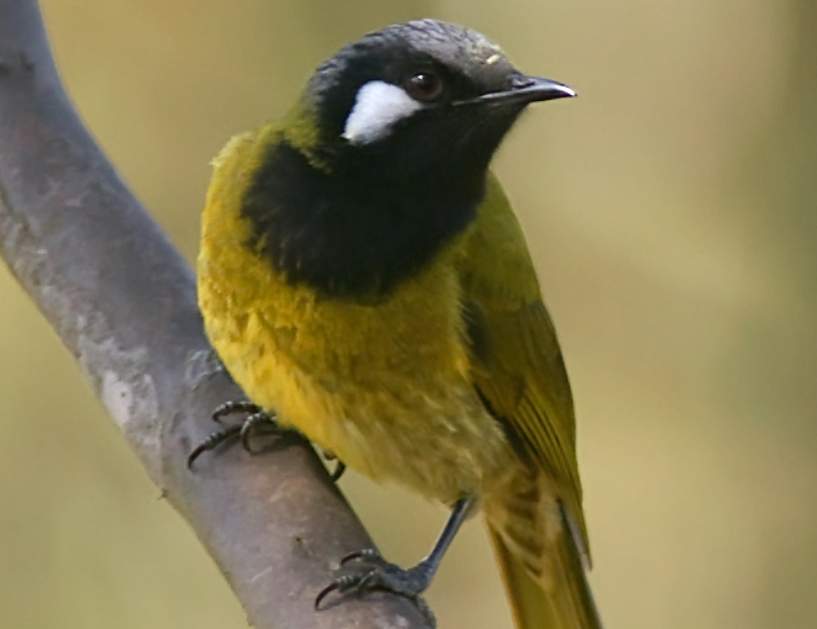American coot (Fulica Americana) size is about 32–37 cm; in length with a wingspan of 60–70 cm. The American coot is a transatlantic vagrant that closely resembles Eurasian Coot. However, somewhat smaller, with white sides to undertail coverts and an inconspicuous frontal shield (less swollen than in Eurasian, becoming reddish-brown at the top). Other than note that immature Eurasians shows smaller frontal shield than an adult.
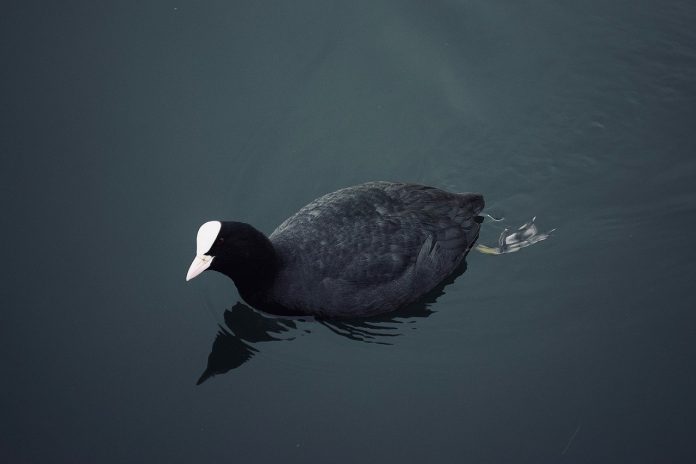
American coot head shape is more angular than that of Eurasian, and the bill appears to be dark-tipped, having a dusky or reddish-brown subterminal band. The body plumage is grayer, producing to some extent stronger contrast with a blacker head, neck, and forebody. Whereas Eurasian shows some contrast this is less marked than in American coot.
In Eurasian, the black facial feathering projects forwards in a sharp point at the base of the bill, below the frontal shield, (creating a white indentation around the gape), while in American Coot the feathering is rounded off and does not project forwards in a point (so there is only a weak indentation around the gape). In-flight, the whitish trailing edge to secondaries is a little more noticeable than in Eurasian.
The juvenile bird, perhaps unlikely to turn up in the European region, resembles juvenile Eurasian but shows white sides to undertail coverts. It habitually shows a hint of the dark subterminal band on the bill, but juvenile Eurasians can also show such a characteristic. It shows the same bill feathering dissimilarity as an adult. The major identification pitfall is a very occasional hybrid between Eurasian Coot and Common Moorhen, but hybrids are unlikely to show all features of the American Coot.
Thus, one such bird lacked both bill band and white on secondaries, as behavior as Eurasian. Though, the differences from Red-knobbed Coot mostly as for Eurasian, the shape of the feathering on the bill base is parallel while Red-knobbed shows no white at all on the trailing edge of the wing and has obvious red knobs at the top of the bill shield for a short period early in the breeding season.
The American coot is reddish on the frontal shield most conspicuous in the breeding season. Juvenile described above; much as an adult by the first autumn, but with the slight olive cast to dark grey upperparts seen in 1st-winter birds. The call of the American coot is harsh, croaked ‘krok’, rather different from the typical call of the Eurasian Coot. The American coot habitats are vagrant (W Europe) and in the natural range found in similar habitats to Eurasian Coot.
Read More – Grey-headed Honeyeater Call

